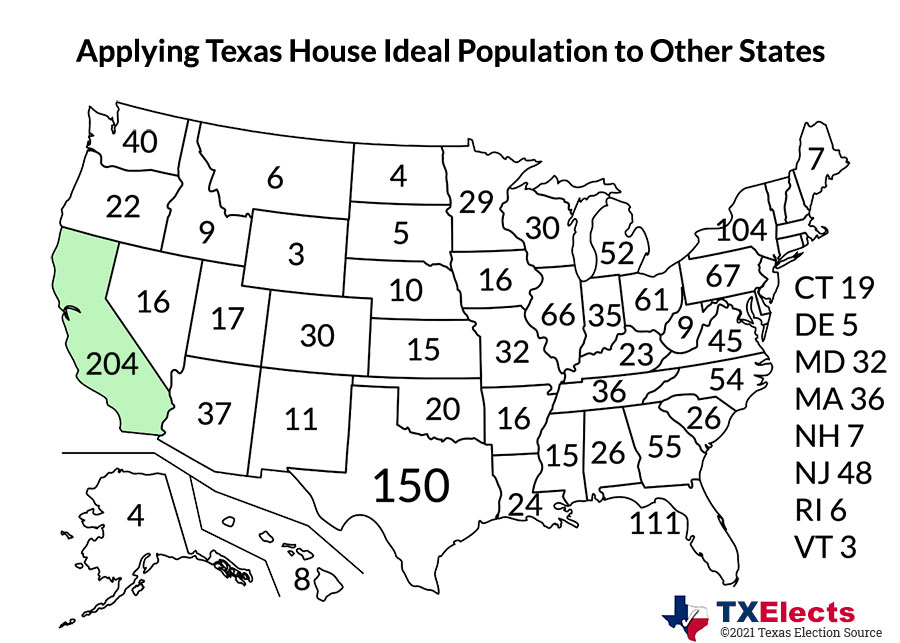5
Number of U.S. states with a smaller population than an ideal Texas Senate district after redistricting.
The ideal population is the number of people in a district if all districts had equal population. For the upcoming redistricting process, that ideal population for each of the state’s 31 Senate districts is just over 940K, a 16% increase from the 2010 Census. At that figure, each Texas state senator will represent more people than the U.S. Senators of Alaska, North Dakota, South Dakota, Vermont or Wyoming and almost as many as Delaware, Montana or Rhode Island.
- 1,098,163 – Rhode Island
- 1,085,407 – Montana
- 990,837 – Delaware
- 940,178 – ideal Texas Senate district
- 887,770 – South Dakota
- 779,702 – North Dakota
- 736,081 – Alaska
- 643,503 – Vermont
- 577,719 – Wyoming
The ideal state House district will have just over 194K people in it. If that same ideal population were used in other states, the result would be dramatically smaller legislatures. The Vermont and Wyoming Houses would have just three members. The graphic below indicates the number of seats each state would have in its lower – or, in Nebraska’s case, only – chamber if the Texas ideal population were applied to them.
California is the only state that would end up with a larger House if its ideal population was the same size as the Texas House. New Hampshire would see the biggest reduction in seats. It would go to a House of 7 seats from the 400 members it has today.
The ideal Congressional district will have just under 767K people in it – a figure that applies nationally. The state will have 38 districts for the 2022 elections, a gain of two seats over the current apportionment. The ideal population of a New Hampshire legislative district will be just 3,447 people. In other words, an ideal Texas House district would contain more than 56 ideal New Hampshire House districts.
©2021 Texas Election Source LLC


